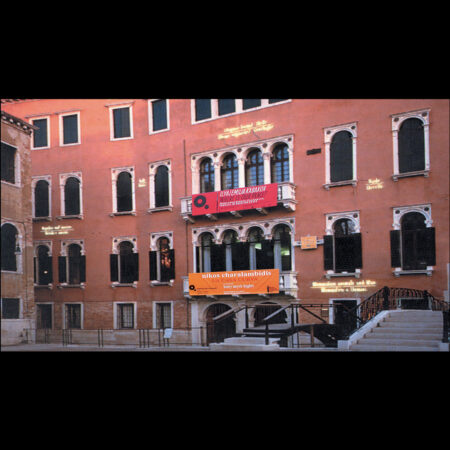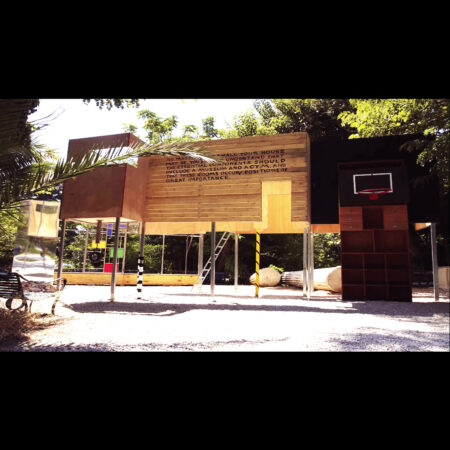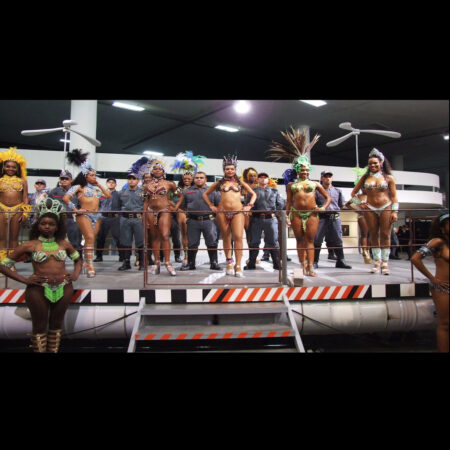NIKOS CHARALAMBIDES / Professor

NIKOS CHARALAMBIDES
Government Gazette issue announcing the appointment: ΦΕΚ 2057/Γ/11.08.2023
Head of the Sculpture Department and Director of the 2nd Sculpture Studio of the Athens School of Fine Arts
Nikos Charalambides is a full-time Professor at the Athens School of Fine Arts. He is regarded as one of the most important and influential visual artists of the younger generation of Greek creators, with extensive international activity and recognition. Belonging to the artistic generation of the 1990s, he was described by art historian Effi Strouza—on the occasion of his 2007 award from AICA Hellas (International Association of Art Critics, Greek Section)—as one of the leading exponents of Political Art in Greece.
Beyond the socio-political dimensions that shape the core of his research, Charalambides has, since the beginning of his career, forged an innovative visual vocabulary. On the one hand, this vocabulary embraces the use of digital media, robotics, and other cutting-edge technologies of his time; on the other, it redefines traditional techniques, forgotten crafts, customary rituals, and disguises. Since the mid-1980s, his systematic investigation of archives concerning the Cyprus issue and the wider troubled region of the Eastern Mediterranean has also been groundbreaking. Long before the term “archive artists” came into use, he was pioneering this methodology, often engaging in interdisciplinary collaborations with historians and scholars from various fields to enhance the depth of his research.
He studied painting at the Accademia di Belle Arti in Florence (1986–1990) and architecture at the Università degli Studi di Firenze (1988–1993). He continued his studies in painting and sculpture at the Athens School of Fine Arts, where he also completed his postgraduate studies, specialising in new media and technologies, with a focus on digital and robotic applications in contemporary art.
His diverse body of research was acknowledged early on through numerous awards and distinctions. Notably, in 1992, he received the First Prize of the Yiannis & Zoe Spyropoulos Foundation before even completing his studies, marking the beginning of a unique artistic trajectory. This path has since become the subject of academic study and doctoral theses, serving as a major influence for younger artists concerned with sociopolitical issues and as a reference point for prominent art theorists and historians, such as Catherine David, Orlando Britto Jinorio, Rafal Niemojewski, Henry Meyric Hughes, Antonio Zaya, Brent Klinkum, Berta Schigel, Bernhurt Shultz, Claudia Zanfi, Lisette Lagnado, Elizabeth Janus, Adelina von Fürstenberg, Christos Ioakimidis, among others.
As early as the mid-1980s, his daring, interventionist actions in the Gaza Strip and along the Green Line in Cyprus—his homeland—which put his very life at risk, transcended the dominant artistic trends of the time. Themes such as forced displacement and exile, the legacy of colonialism and its repercussions, migration and nomadism, national identity and its contestation, rootedness and the “non-place,” even the colonisation of outer space and strategies for its exploitation, first appeared in Charalambides’ early work—subjects that, decades later, would become common themes for many international artists.
Much of his work centers on activist interventions in war zones and disputed territories, multimedia performances, intercultural productions, revivals of traditional rituals and customs, monumental sculptural installations, video projections, and other digital applications. A key dimension of his practice is participatory projects, where, alongside his visual environments and sculptural installations, he organises platforms for interdisciplinary collaboration, student workshops, performances, lectures, seminars, and collaborations with guest artists. Through these, his exhibitions often take shape as multi-layered programs of activities.
Henry Meyric Hughes, President of the International Association of Art Critics, referred to Charalambides as the “emblematic dissident of the Green Line” in his extensive essay for Charalambides’ solo exhibition at the Venice Biennale in 2003. Curated both by Hughes and by other internationally acclaimed curators and art historians, Charalambides has presented more than 65 solo exhibitions in major international art centers, institutional venues, and biennales, as well as in leading museums, including the Musée d’Art Moderne de Paris, the Centre Pompidou, Turner Contemporary in London, Palazzo Querini Stampalia and Palazzo Giustinian Lolin Querini in Venice, Pavilion Ciccillo Matarazzo in São Paulo, the Institute of Contemporary Art in Sofia, the Musée des Archives Nationales in Paris, BOZAR – Palais des Beaux-Arts in Brussels, the Centro Atlántico de Arte Moderno (CAAM) in Las Palmas, the National Museum of Anthropology in Madrid, the National Art Museum of China in Beijing, the Zachęta National Gallery of Art in Warsaw, Alte Post Vienna Contemporary Museum in Vienna, the National Film and Sound Archive of Australia (NFSA) in Canberra, the National Museum of Contemporary Art in Athens, the Benaki Museum in Athens, among others.




